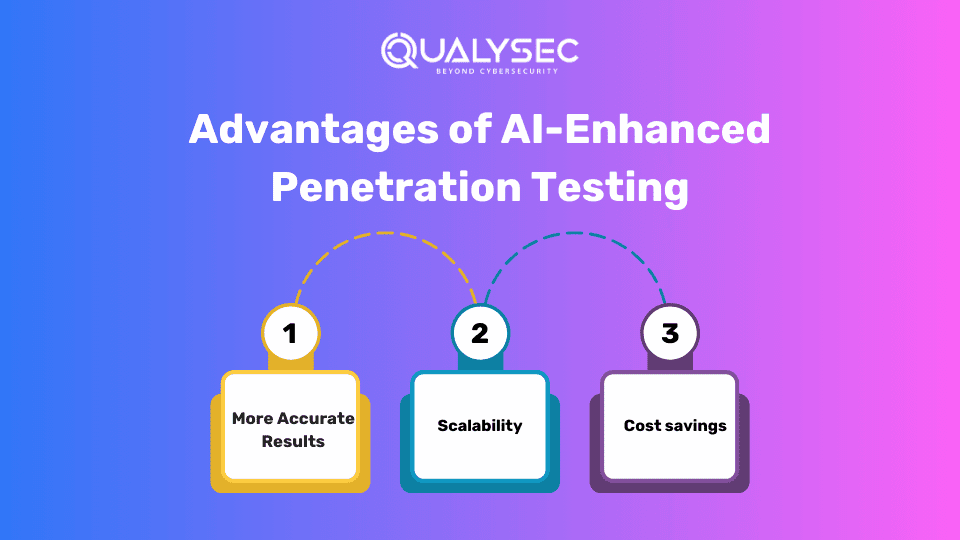When we discuss proactively testing our environment or applications to look for vulnerabilities ahead of a hacker, we talk about penetration testing or “ethical hacking” exercises. This concept is quite old. When you’re trying to find deficiencies in your processes and controls through simulations or cyber attacks, then you are performing a penetration test and this entails hiring a penetration testing company. By incorporating AI Threat Intelligence, you can further strengthen your defenses by identifying emerging threats in real time.
Evolution of Pen testing
The penetration testing practice has evolved with time from an entirely manual and burdensome process of which only a few people knew the art to now being a rather automated and much-propagated process. This goes hand in hand with the evolution of technology.
In the early days, most processes were done with a lot of computers, so it was quite efficient to conduct manual penetration testing. Later on, as computers multiplied and processes began to get automated, penetration testers were forced to automate their tools in order to cover more ground in a shorter period of time, thus faster detection of vulnerabilities.
Now, we have reached a point where companies possess different types of technologies and hundreds of thousands of IP addresses. Therefore, it becomes more challenging for pen testers to check everything within a reasonable amount of time with precise results. That is why the use of artificial intelligence and machine learning has started to help pen testers get past these barriers.
Artificial intelligence is described as the ability of a machine to perform tasks that simulate human intelligence. A subset of artificial intelligence is machine learning, referring to the concept that a system can learn and adapt without following specific instructions but as an alternative through algorithms and statistical models studying statistics to draw conclusions.
Related Read: Impacts of AI on Cybersecurity
Challenges with Traditional Penetration Testing
Even though pen testing is a crucial part of cybersecurity, the traditional methods are often highly challenged in the following ways:
- Time-Consuming: Penetration tests by hand can take ages, especially when dealing with big or complicated systems. The test may last days or even weeks, which would expose security vulnerabilities for longer.
- Human Error: Even with the expertise of human testers, they can easily miss crucial vulnerabilities or misunderstand data, and thus an incomplete assessment may result.
- Limited Attack Simulations: Modern cyber threats are far more advanced than what traditional pen testing may account for. Sophisticated attacks like zero-day exploits, social engineering, and multi-layered threats are harder to simulate manually.
- Scalability Issues: Large-scale systems require more extensive testing, which can be overwhelming for human testers. This makes it difficult to cover every part of a vast network effectively.
Explore: AI-Based Application Penetration Testing and Its Importance
Is AI Used in Penetration Tests?
So just how can AI and ML support penetration testing? Let’s take a look and analyze the different phases in a normal penetration test assessment and determine where AI and ML can be used. There are several well-known methodologies and standards that can be used to perform penetration tests such as OSSTMM (Open Source Security Testing Methodology Manual), OWASP (Open Web Application Security Project), NIST (National Institute of Standards and Technology), PTES (Penetration Testing Methodologies and Standards), ISSAF (Information System Security Assessment Framework). But for a better-streamlined analysis, we will only mention the four stages of penetration testing in which Artificial Intelligence and Machine Learning will be applied:
1. Information Gathering and Reconnaissance –
Through this phase of pen testing, we try and gather as much information as possible about our targeted system by bringing information from easily accessible sources into light to derive the open ports and services during this phase. At the end of this phase, we would have a dossier of our targets including information such as domain names, target hosts, services enabled, technologies in place, employees’ names, employees’ emails, physical locations, pictures of the physical locations, potential usernames and passwords, etc.
2. Vulnerability Assessment / Scanning –
In this penetration testing phase, we do more in-depth vulnerability scans trying to determine all the potential vulnerabilities that the targets could have. Here, AI and ML could aid the pen tester in understanding what the scans report by analyzing and filtering out whatever is not relevant or produces noise, considering all the information extracted from the first phase combined with threat intelligence drawn from social media, open records, the deep web, dark web, etc. This will also enable AI and ML to determine the best course of action for the attack phase by correlating all gathered information and knowledge.
3. Exploitation –
This is the phase of pen testing where we put into action everything that was planned before. Here, we try, among other things, to gain access to the systems, perform lateral movements, escalate privileges, gather more information, and maintain persistent access. As I mentioned previously, AI and ML can support by determining what is the best possible course of action to penetrate the target, and they can carry out the exploitation simultaneously. Their results can feed back into the AI model such that it creates exploitation alternatives or new exploitation pathways not considered up to this time.
4. Reporting –
At the end of this stage, a comprehensive report inclusive of all details regarding the issues discovered, the implications of these risks, and recommendations are provided to the penetration testing client. AI and ML can bolster the reporting by processing the data that has been gathered during the assessment and linking them to threat intelligence and knowledge obtained in previous engagements to produce actionable insights applicable to the organization undergoing review.
AI-Driven Tools for Penetration Testing
Several AI tools are being developed to accelerate penetration testing:
- Burp Suite: It is a common web vulnerability scanners, it implements AI for automating the detection of common and complex vulnerabilities, thereby speeding up testing time.
- Metasploit with AI Plugins: It is one of the most popular platforms devoted to penetration testing and can be bolstered by AI plugins contributing towards more tactical attack simulations and exploitation strategies making the tests more effective.
- DeepExploit: Through this AI-enabled tool, exploiting detected vulnerabilities has been automated. It learns from previous tests and can try different exploitation strategies in order to do the work more efficiently and accurately each time.
These tools assist ethical hackers in uncovering vulnerabilities faster and more accurately, improving the overall security of the systems.
Advantages of AI-Enhanced Penetration Testing

AI brings with it a host of benefits for the penetration testing process:
AI makes the penetration testing process significantly faster as it automates all repetitive tasks such as scanning for vulnerabilities.
- More Accurate Results: AI decreases the risk of human error, as it will ensure that vulnerabilities are correctly detected and prioritized. This will lead to fewer false positives and false negatives.
- Scalability: AI has no problem managing large, complicated systems. A small website is as easy as a large enterprise network for an AI to test.
- Cost savings: Automating key aspects of penetration testing means less time is spent on manual tasks. This leads to cost savings, making high-quality security assessments more accessible to businesses of all sizes.
The Future of AI in Penetration Testing
As AI continues growing, so does its scope of work in penetration testing. AI futures may involve the autonomous generation of test cases, predicting new cyber attack techniques, and continuously improving the ability to detect existing ones. Along with these factors, the expertise of human professionals and AI together will continue to protect people from emerging threats in the realm of cyber attacks.
Also Read: The Evolution of Penetration Testing: From Manual to AI-Driven Approaches
Why Do Pen Testing Certifications Matter?
There are several penetration testing certifications that have been recognized. Most require previous experience in systems administration and networking. The value of a penetration testing certification is in increased credibility and skill level and helps the client ensure that they get a manual investigation of all their systems from a certified person. An in-house penetration testing team would have more frequent tests, quicker responses, and lower costs compared to external services.
Takeaways
- AI -powered penetration testing works to automatically carry out a penetration test using machine learning and AI.
- Penetration testing comprises five phases: reconnaissance, scanning, vulnerability assessment, exploitation, and reporting.
- Automated penetration testing boosts team productivity and also enables use with SOC and SIEM applications
- Penetration testing must be done with a multi-layered security strategy, advanced technologies, regular security audits, trend updates in cybersecurity, and training of the personnel.
- AI-powered automated security detects aberrant actions and scans data for vulnerabilities.
- B2B integration with AI security prioritizes strong cybersecurity and data privacy rules.
- Certification trains security experts to discover security flaws.
- In-house testing teams provide more frequent testing, faster reaction times, and reduced expenses.
Conclusion
The future of penetration testing lies in using AI to make results more accurate and evaluations more efficient. However, it is also important to understand that pen testers still must use their experience and knowledge to ultimately decide what is the best course of action to perform the assessment. To speak with an expert on Qualysec’s cybersecurity team please call tel:8658663664 or learn more about our penetration testing services here.
FAQ
1. What is penetration testing, and why is it important?
Penetration testing is ethical hacking, which detects vulnerabilities in systems before attackers do. It is critical for preventing data breaches, enhancing system security, and ensuring compliance with industry regulations.
2. How does AI change the penetration testing process?
AI improves penetration testing by automating routine tasks such as vulnerability scans, simulating sophisticated attacks, and prioritizing threats. It speeds up the process, improves accuracy, and scales well to test large or complex systems.
3. Can AI replace human penetration testers completely?
No, AI cannot fully replace human testers. Though AI can penetrate more efficiently and process more data, human judgment is necessary for critical analysis of complex results, validation of findings, and strategic security decisions.
4. What are the key benefits of AI penetration testing?
AI provides:
- Testing speed: Automated scans save time.
- Higher accuracy: It eliminates false positives and negatives.
- Scalability: It easily manages large and complex networks.
- Continuous monitoring: Provides real-time insights as systems evolve.
5. What are the major difficulties in incorporating AI into penetration testing?
The difficulties include:
- Data quality issues: AI requires good quality and unbiased data to function.
- Human oversight: Experts must interpret and validate AI findings.
- Ethical concerns: The proper use of AI tools is essential to avoid misuse.
































































































































































































































































































































































































































































































































0 Comments